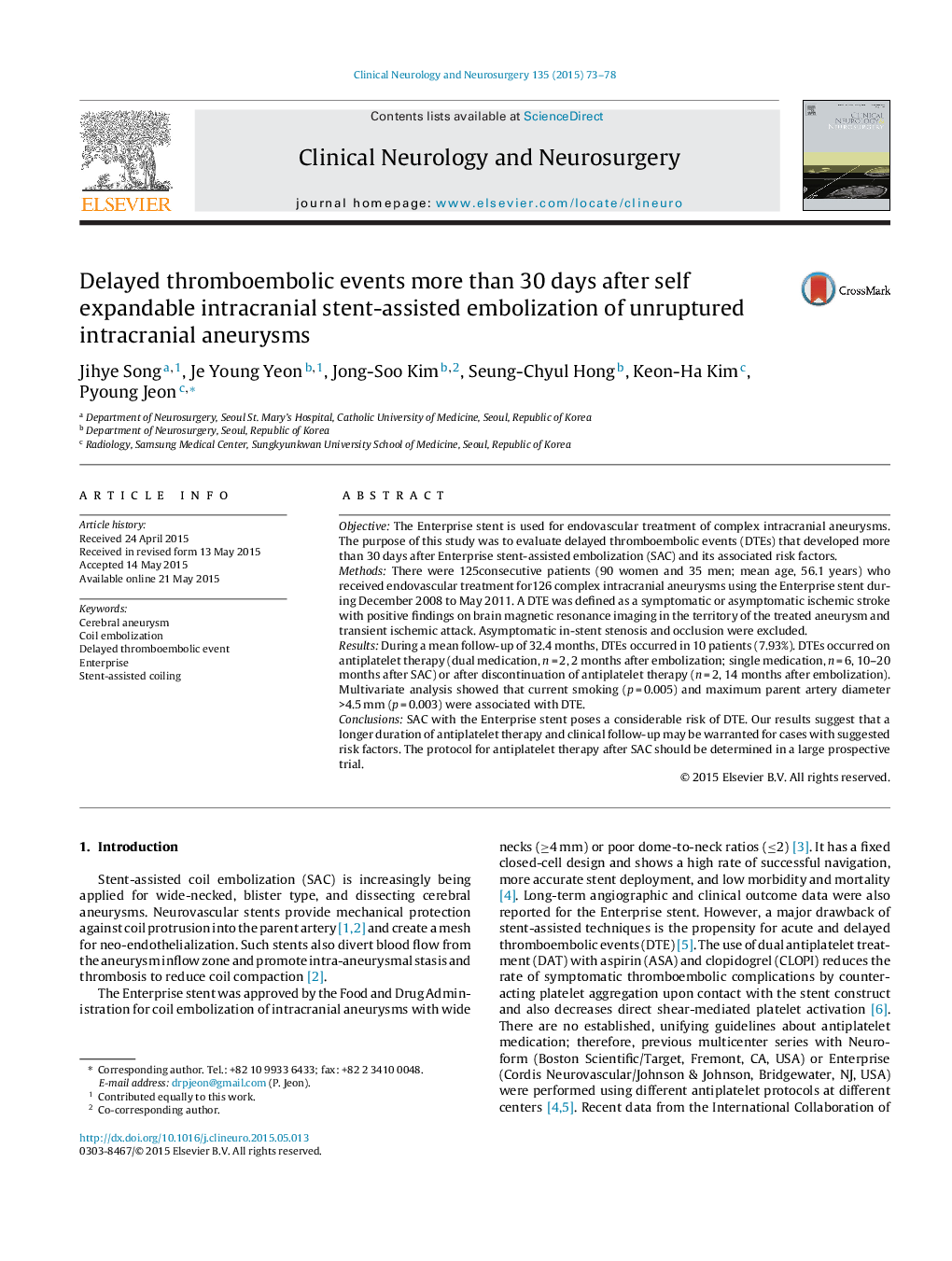| Article ID | Journal | Published Year | Pages | File Type |
|---|---|---|---|---|
| 3039859 | Clinical Neurology and Neurosurgery | 2015 | 6 Pages |
•Enterprise stent-assisted coil embolization of unruptured intracranial aneurysm poses a considerable risk (8%) of delayed (>30 days) thromboembolic event.•Parent artery diameter >4.5 mm was associated with delayed thromboembolic event.•Eight delay thromboembolic events were occurred even on antiplatelet medication and one of them occurred 20 months of treatment.•Two delay thromboembolic events were associated with discontinuation of antiplatelet therapy after 14 months of treatment.
ObjectiveThe Enterprise stent is used for endovascular treatment of complex intracranial aneurysms. The purpose of this study was to evaluate delayed thromboembolic events (DTEs) that developed more than 30 days after Enterprise stent-assisted embolization (SAC) and its associated risk factors.MethodsThere were 125consecutive patients (90 women and 35 men; mean age, 56.1 years) who received endovascular treatment for126 complex intracranial aneurysms using the Enterprise stent during December 2008 to May 2011. A DTE was defined as a symptomatic or asymptomatic ischemic stroke with positive findings on brain magnetic resonance imaging in the territory of the treated aneurysm and transient ischemic attack. Asymptomatic in-stent stenosis and occlusion were excluded.ResultsDuring a mean follow-up of 32.4 months, DTEs occurred in 10 patients (7.93%). DTEs occurred on antiplatelet therapy (dual medication, n = 2, 2 months after embolization; single medication, n = 6, 10–20 months after SAC) or after discontinuation of antiplatelet therapy (n = 2, 14 months after embolization). Multivariate analysis showed that current smoking (p = 0.005) and maximum parent artery diameter >4.5 mm (p = 0.003) were associated with DTE.ConclusionsSAC with the Enterprise stent poses a considerable risk of DTE. Our results suggest that a longer duration of antiplatelet therapy and clinical follow-up may be warranted for cases with suggested risk factors. The protocol for antiplatelet therapy after SAC should be determined in a large prospective trial.
